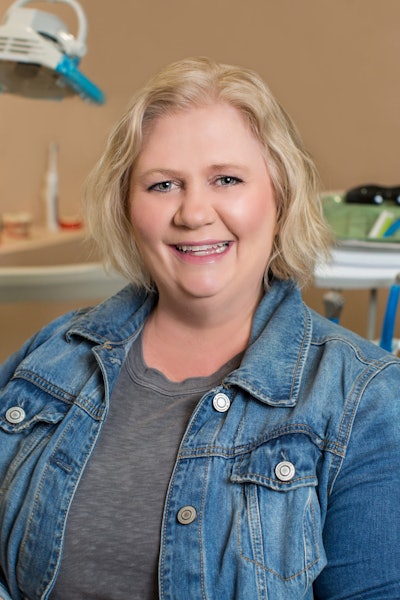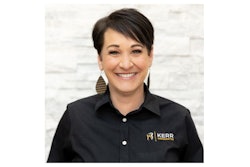Communication is the backbone of society. It allows us to connect and interact with others, share information, and build relationships. Conflicts arise, relationships break, and efficiencies fly out the window without effective communication. It doesn't matter if you have a team of two, 20, 200, good communication is paramount.
Communication -- from front office to back office, from doctors to staff, from office to patients, from doctors to patients -- is a never-ending cycle and must be well executed from top to bottom, side to side, forward and backward. When you stop and examine good communication, it is essential to understand that there are four (if not more) important pieces that define communication easily.
Written communication
 Yvette S. Medellin.
Yvette S. Medellin.
From the minute someone picks up an incoming phone call, that person should write notes. Why are patients calling? Are they in pain? Are they new? What kind of insurance do they have? Did someone refer them?
But it doesn't stop there. Once a patient is in the chair, you need your dental assistants and hygienists to help with chart notes and other things that require them to communicate appropriately.
Written communication must be thorough and understandable when passed from one person to the next. You can create scripts for incoming calls, follow-up calls, properly talking to patients in the office, etc. If you write it down first, it will help with the next phase.
Oral communication
Everyone in the office, regardless of their role, must effectively communicate with others on the team, the doctors, front office personnel, and patients. From the minute the patient walks in, someone should be talking (hopefully, it isn't the patient on their cell phone).
In our office, I like patients to be called by name, so we have a simple hand off. Once they are welcomed in by name, the assistant is told (whether via text, face to face, or on the phone) that Mr. Smith is ready to return. Then whoever takes the patient back says, "Hello, Mr. Smith, so great to see you today!" (or something to that effect). We like everyone to feel welcome. Let's face it, most people hate visiting the dentist, even if they love us! The more you can do to put them at ease, the better.
Once the patient is seated in the chair, you want your assistants, hygienists, and doctors to all discuss things with the patient. Explain treatment and answer questions or concerns -- everyone needs to be able to talk. But when you are not the one speaking, this next piece is critical.
Active listening
Active listening involves fully concentrating on what the person is saying, comprehending the message, and responding appropriately. It starts with the incoming phone call and the person answering it, but I find it most important in the treatment room.
If an assistant is distracted and not actively listening to the doctor, they may mess something up. If nobody is listening to the patient, you could miss something.
Active listening is best demonstrated when you can face the person who is speaking. But that isn't always possible, especially if you are chairside with your doctor. In a perfect world, active listening involves sitting in front of the other person (not standing behind them), asking open-ended questions, and listening to the responses. Nodding in affirmation, rephrasing things they are told if there is any uncertainty, and then carrying out the instructions.
Nonverbal
I vividly remember one of my communication classes in college. I'll never forget the day the professor came in and conducted class without speaking. She taught a lot that day about facial expressions, gestures, eye contact, and posture, which are essential communicators. Whether you are the one observing the cues or receiving them, people say a lot about this.
I used to have an assistant standing in the room with her arms folded while the doctor spoke to the patient. It was such an aggressive stance and made everyone feel uncomfortable. Practice with your team -- play charades or something to make it fun. They used to tell us to practice speaking in front of a mirror, but I say practice speaking in front of your phone. Record yourself and watch the video, paying particular attention to your facial expressions. You'll be surprised how much better any message is received when the speaker knows what their body language is saying.
Visual
We are a visual society. If you think about it, televisions (or phones) are running 24/7, Facebook is visual with memes, videos, images, etc., Instagram is an image-only platform, and advertisers use imagery to sell products and ideas.
Think about it from a personal perspective. The photos we post on social media are meant to convey meaning and to communicate a message. Sometimes, that message might be, "Look at me, I'm in Italy" or "I won an award." Others are carefully curated to tug on our heartstrings -- injured animals, crying children, you know, the ones I'm talking about. Ensure the images you share represent your desired message, because everyone sees it.
We communicate continually throughout the day. We do it without thinking, operating on communication autopilot. However, I encourage you to think about how you communicate. How do you communicate verbally? What nonverbal cues do you use when you are disinterested? Excited? Nervous? Are you a good listener? Can you write a concise, clearly articulated message? Are there barriers to how you communicate effectively? Understanding how you communicate is the first step to communicating more effectively.
Yvette S. Medellin was a business consultant in the entertainment industry for more than 16 years before entering the dental field. She has spent the last nine years helping her husband Joe build and run their dental practice, OrthoGrace Dental, along with their dental lab, 4M Dental Labs.
The comments and observations expressed herein do not necessarily reflect the opinions of DrBicuspid.com, nor should they be construed as an endorsement or admonishment of any particular idea, vendor, or organization.



















